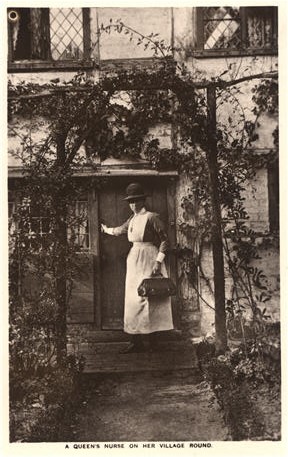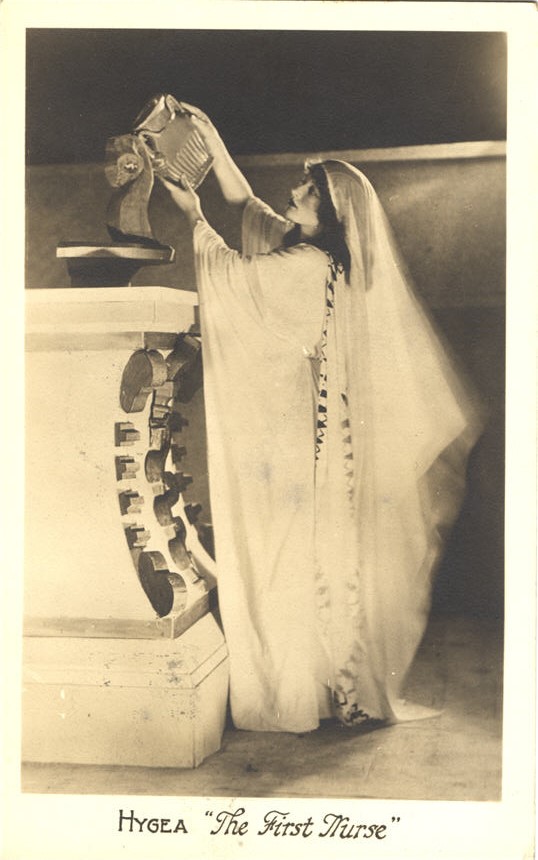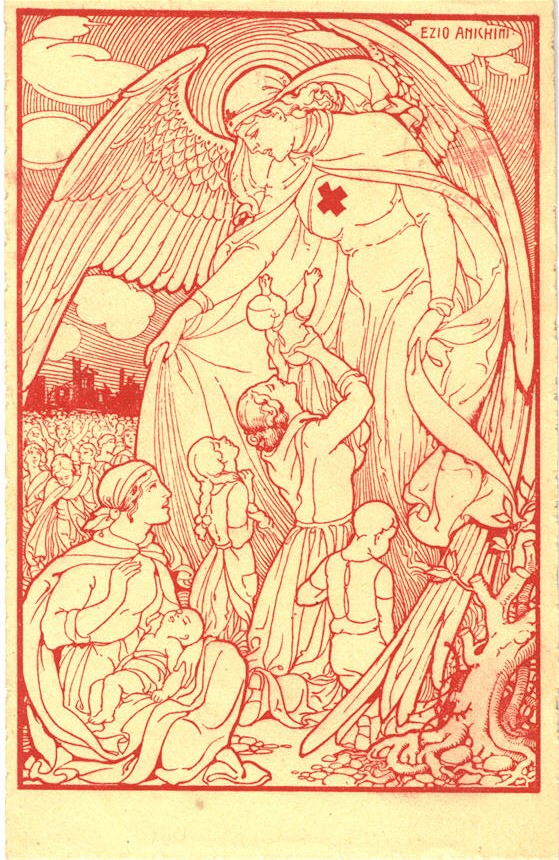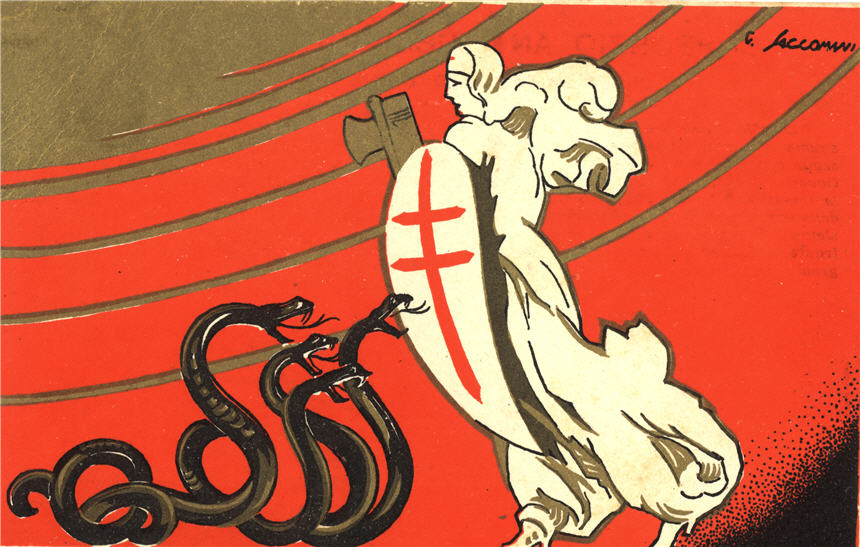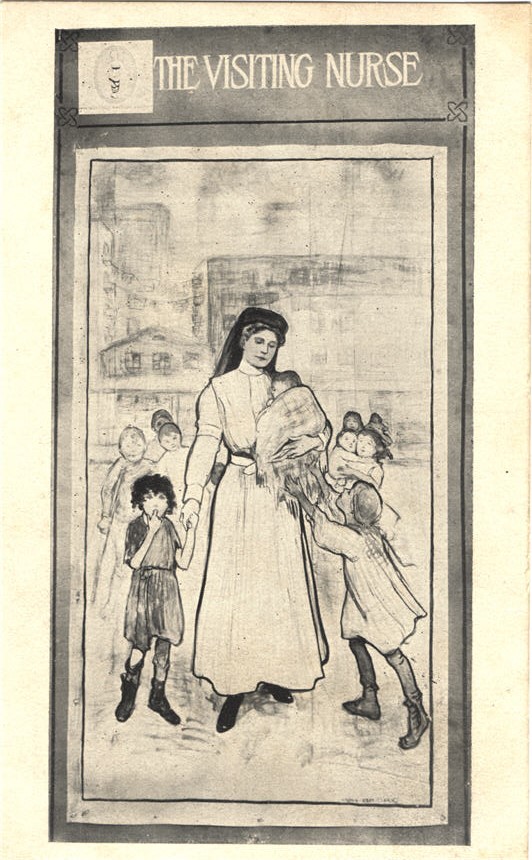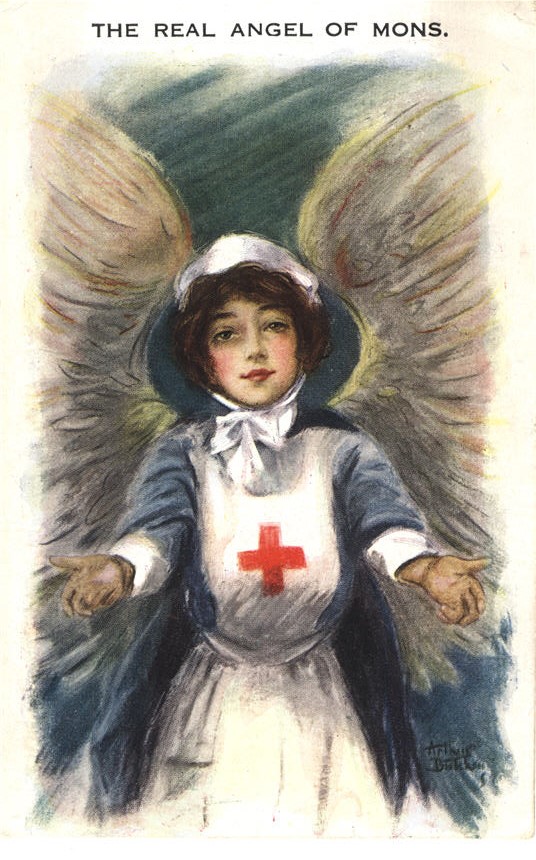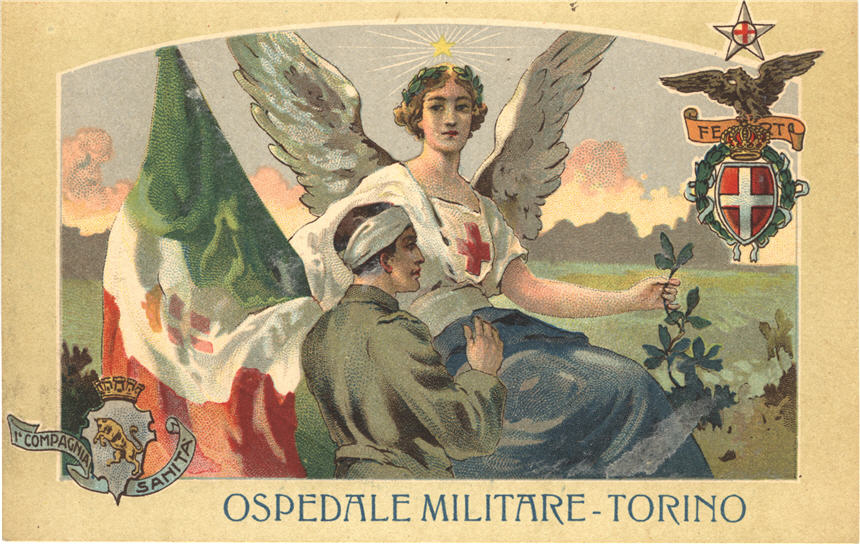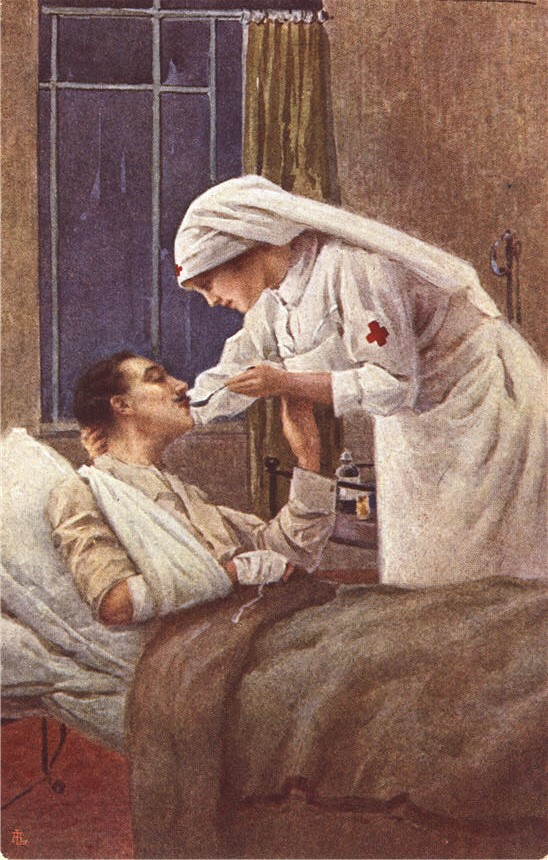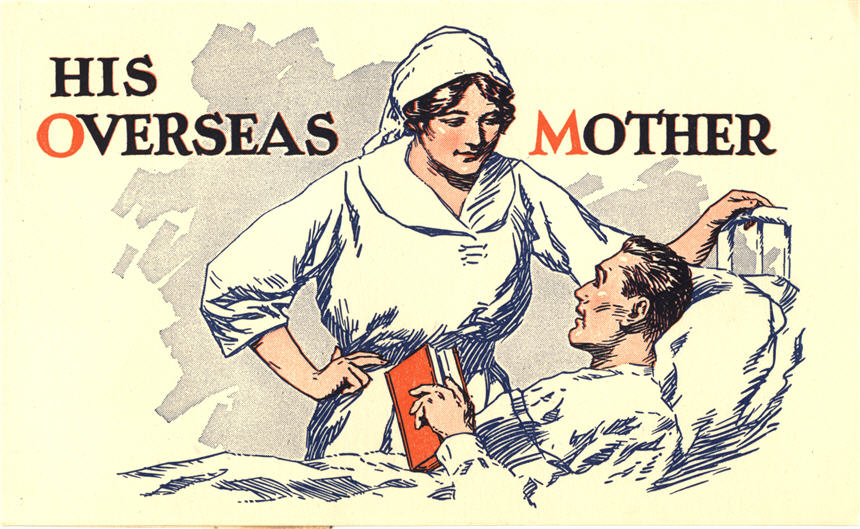Ideas about women, health care, and healing in Western cultures have religious and cultural origins reaching back to ancient times. Later, with the coming of Christianity, the care of the sick is largely undertaken by religious nursing orders, such as the Sisters of Charity.
Images of nurses in the European art traditions of the 19th and early 20th centuries are often based on ancient Classical and Christian feminine archetypes such as healer, handmaiden, mother, angel, and guardian or warrior.
Hygea “The First Nurse,” 1933
Produced by Ring Sanatorium and Hospital Inc., Arlington Heights, MA
Hygeia, the Greek goddess of health, is often thought of as the first nurse. Daughter of Asclepius, the god of medicine, Hygeia was in charge of cleanliness and preventative medicine in the religious cultures of the ancient Mediterranean world.
Promotional postcard portraying an angelic nurse, 1916
Created by Ezio Anichini (1886—1948)
Produced by Italian Red Cross
The archangel Gabriel with a red cross enfolds suffering humanity in her protective cloak. In Christian art and literature, female angels are often associated with spiritual cleansing of the body and mind; they are also agents of hope and compassion, appearing to those in need of moral guidance and enlightenment.
Anti-Tuberculosis Campaign, ca. 1935
Created by G. Saccomani
Produced by Anti-Tuberculosis Consortium of the Province of Udine, Italy
Postcards to raise public awareness often drew on ancient religious and cultural associations between women and health; here the nurse is imagined as a battle-axe-wielding Amazon. In 1902 an international conference, convened to discuss the problem of tuberculosis, adopted the Cross of Lorraine to symbolize the fight against the disease.
The Visiting Nurse, United States, 1911
The nurse, cradling a baby and dressed similarly to a nun in a veil and habit, is shown as a Christian mother figure. This imagery was designed to appeal to respectable middle class women and encourage them to volunteer to visit the poor in their own homes, this work became known as ‘women’s mission.’
The Real Angel of Mons, ca. 1915
Produced by Inter-Art Co., London
Nurses working on the battlefields of war were frequently depicted as angels; sometimes, when wounded soldiers are shown close to death, they appear beside them, ethereal and unearthly. Here she is given concrete form, a symbol of healing, spiritual comfort and hope for the future.
1st Compagnia Sanita Ospedale Militare-Torino (1st Sanitary Company Military Hospital of Turin), ca. 1916
Produced by 1st Sanitary Company Military Hospital of Turin, Italy
Per i feriti in guerra (For the wounded in war), ca. 1915
Created by Luigi Fiorini
His Overseas Mother, United States, ca. 1918



